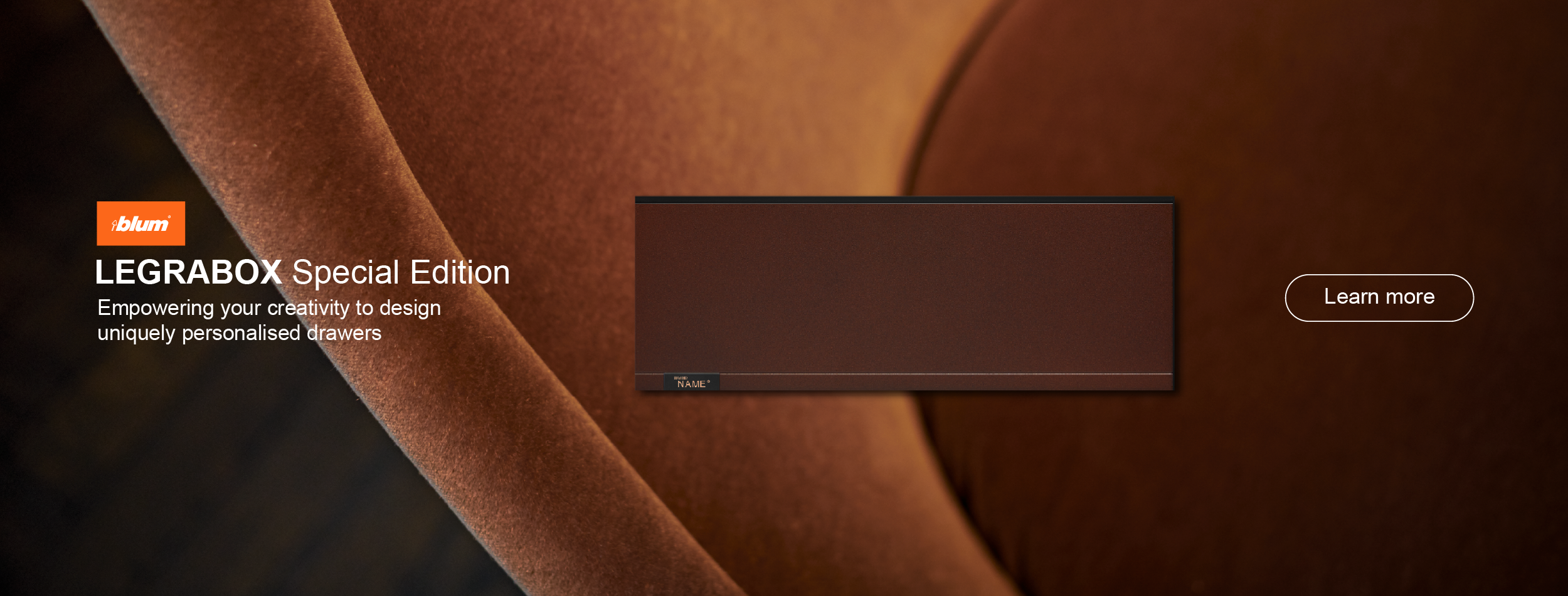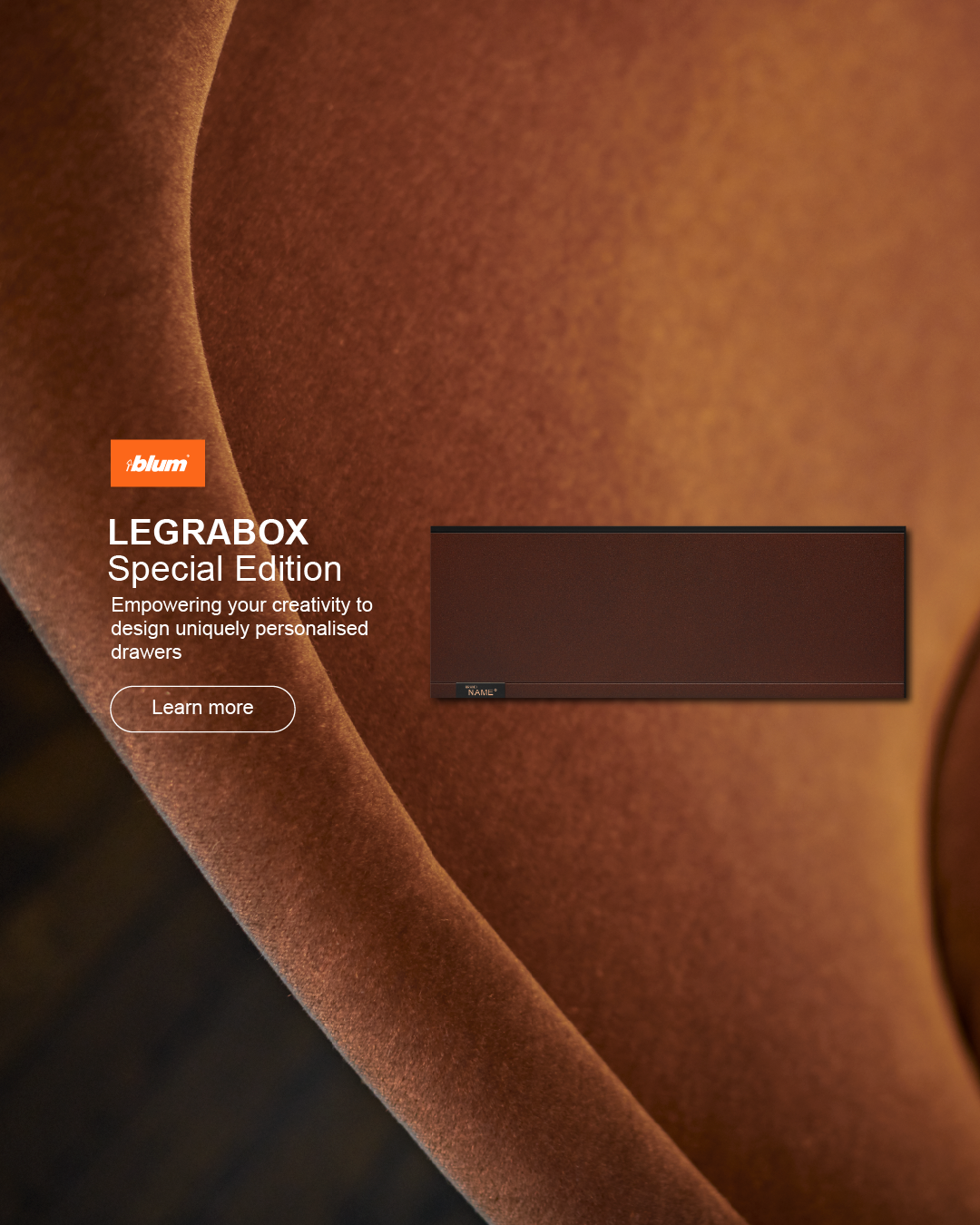
Written in Nature – Why Biophilic Design Matters
Over a century ago, Catalan architect Antoni Gaudi argued that “nothing is invented, for it’s written in nature first.” Today, we may still marvel at the sheer genius of nature to evolve complex design solutions more elegantly and innovatively than the aspirations of even the greatest designers. Even so, it’s no secret that we are becoming more disconnected from nature while we also grapple with the consequences of exploiting it – 70 per cent of the world’s population is predicted to live in cities by 2050, and human-induced global heating is set to exceed 1.5 degrees in the same timeframe. Yet – while this correlation would seem to suggest a link between urbanisation, disconnection from nature and the climate crisis – research shows that increasing the density of cities will be important when it comes to dealing with, and hopefully limiting, the consequences of a heating planet.
Into this breach steps biophilic design. Based on the theory of biologist Edward O Wilson, biophilia describes humans’ inherent, biological connection to nature. Biophilic design draws on this connection as the foundational principle informing the design of built environments. Though the concept is not new, it has previously spoken more to localised benefits for the wellbeing of inhabitants of buildings and cities, rather than to a recalibration of the approach to the design and construction of objects, spaces, buildings and neighbourhoods. But the central challenge posed by increasing urbanisation on the one hand and the climate crisis on the other would seem to demand that the wellbeing of individuals, communities and ecosystems are no longer considered in isolation and instead as facets of the whole.
Bonnie Herring, Director of Sustainability at Breathe, describes biophilic design as a “reprioritisation of nature within the built environment.” Similarly, Koichi Takada, Director of Koichi Takada Architects, attests to the “psychological benefits to nature-filled spaces. Studies show a reduction in stress, better sleep quality and stronger human relationships. In other words, if nature thrives, we thrive too.” And Benjamin Shields of DREAMER says that “for us, biophilic design is a helpful way to describe a holistic sustainable methodology for design to facilitate a feeling of human connection to the natural world, as it relates to wellbeing and positive experiential qualities for inhabitants or users of public space.”
Connection to landscape, views to nature, natural ventilation and light and materials that gesture to the natural world are virtually ubiquitous in today’s architectural fabric – sometimes realised with authenticity and elegance, other times as disappointing, tokenistic attempts. As Benjamin says, there are shortfalls in meaningful biophilic design outcomes due to a lack of education and knowledge sharing. Bonnie agrees, reflecting that our “innate desire for connection with the natural environment can create a market for inauthenticity.” As natural products are often expensive, cheaper options – which, Bonnie points out, “are in fact plastic, composite or non-recyclable” – are specified instead. The resulting architecture masquerades as biophilic, weakening the narrative surrounding this philosophy and ultimately doing more harm than good. This highlights that to be truly biophilic, a design must not simply incorporate ‘natural’ elements that are merely aesthetically pleasing or are in response to ‘biophilic design’ or ‘sustainability’ as trendy buzzwords. Rather, it must work to find the delicate balance where the human and ecological benefits are one and the same.
“We really like the idea that architecture and urban design can be used to reintroduce or regenerate local ecology by making space for deep bed, climate appropriate, native planting wherever possible,” says Benjamin Shields of DREAMER.
For example, at DREAMER and Breathe’s recently completed multi-residential project 388 Barkly Street, views of native landscaping are present from every bedroom; dynamic and diffused light through skylights and voids allows for sun and shadow; and connection with natural systems is provided via a central atrium planted out with lush greenery, while the extensive use of FSC-certified timber offers a material connection with nature. These design features not only benefit the inhabitants but also the wider neighbourhood and the environment. Bonnie explains that Breathe often employs the use of vegetation and planted screens to articulate buildings and “anchor them in place”. Through evapotranspiration – a process by which water is transferred to the atmosphere by evaporation from soil and transpiration from plants – landscaped elements can help to “calm and cool occupants, reducing reliance on mechanical conditioning and lowering emissions in parallel.” She adds, “deep and healthy plant covered soil zones can filter air, produce food without the mileage and sequester carbon.”
And it doesn’t stop there; Benjamin explains that rain gardens and planted stormwater swales are essential in cleaning and slowing stormwater before it enters mains; green areas encourage people to walk and cycle more, reducing congestion and helping to decrease carbon emissions; and natively planted urban environments positively affect local ecology and improve biodiversity. “We really like the idea that architecture and urban design can be used to reintroduce or regenerate local ecology by making space for deep bed, climate appropriate, native planting wherever possible,” he offers.
Koichi Takada Architects’s work also demonstrates similar lines of enquiry. Take Solar Trees Marketplace in Shanghai. As a three-storey marketplace constructed from real and artificial trees, it aims to reconnect shoppers with nature in a densely populated suburban district. Not only does it read as a cluster of trees from afar, providing visual relief from surrounding buildings, but its translucent canopies and solar panels mean the structure will generate its own power and create sun filled interiors. Then there’s the multi-residential building Norfolk Burleigh Heads, which takes cues from the surrounding pine trees in the design of its porous facade, allowing residents to temper light, air and solar gains throughout the day.
Evidently, the environmental benefits of biophilic design are widespread, but there is one particularly fundamental aspect of sustainability at its core. “If people are happier and healthier in their homes, they are less likely to modify or demolish and rebuild,” Benjamin attests. Koichi echoes this, saying, “when we design with people front of mind, we create gravitational spaces – spaces we want to inhabit and enjoy, not knock down and replace.” He adds, “the most sustainable building is one that stands the test of time and inspires us to play our part in bringing about a greener future.” Indeed, biophilic design isn’t our most powerful tool in the fight for a more sustainable future, but it certainly has potential. As Gaudi recognised over 100 years ago, nature is a veritable source of inspiration, and it appears that our biologically driven connection with the natural environment could also hold the answers to our growing individual, social and environmental challenges, working at both a micro and macro scale to the benefit of all.
















![Û['àÄÐuâû× ¤[ü¸óm½vÆ7b¼+ãdpÀ5hxr (ÿ#öjcØí#Ö8Ò5 uwjïd]*Ön.¡~±?Å#®tp~¬6¯=óm¿Ûcphç'²¹¬o,Òñvg=ñbµãä)*¢ ÍzíÕ#ztÈÚz1)è1µsôØ=z*¸t'¥h*§6sÓd%¹$uc1w4ÅuhÅqq!Å(¨àubh`t+³é¿i«wn;ढli¸> Jñ!Æ׬ۮæ~u§a/4
uqkv »ìzb¯¸óÇÿÓ.u;²º+u´xÏÆâ4¼yyz^¸´µ¦ó¹u0èòªidÆÿ[k$1au*¿~. K èüá;[>¨lb¤ò5«r«l#òriñüò`v}ä~óbÒue¾7/êÛÜÔumc¨p}(ëÅùlÏ37a/ÿÖèryÜðåvØ«¨Þ à*¬¬Ñ[zàu¥¯ã»;w(Å+Ú: × ©È´pk× )å·lv¢¸ÛpÝv ÈÚuÄ'Òã¦)¥/l(¥ë+jé׫¦+/)w^w¦tuÔ¦* ÝoqÕsc ³÷cjÔp³w¦6wx
:`kómÖ¿jÏ¥"½d«]Í &m¸¤(»7/¸¢ñÂ^i¦ùû˯õ§Ô..tuäâ徯º¯ô(hu¢þצÍþ¯Çhzse£^ùv¼:eý¤^¬ºu²ÉÎx£íꯦð+ñ'6oùw$b¾fòþµ¢ú6×h¦an©rpr#fõo#¿û&åöÿo P]å=mmn>¨¢zêÎ7ÕÂj¤oÈÂyqn+ñ>ú®¿ ͽ¹ã&} TÒ0À·. CÁéÇ"ö¯ÿ×ì[0¨Ìfåøb es LbvÂñÀk¦(lskÖemiqÓ¤$ÃØstb 02vt]°z¶È)¶*³m[n6
ë1utu]¸ª¸j`u@6Åvs|*² oudð+ñ«Äu~gzkúvÖ1×keyu9zf1pqÁoìýpxm÷tÏ)i¶zo§Á¿kÛåcih¡gv)Íøü µûxc ¡yf;{Ô³a½þmonxgÅ"óÚhï6û|¤ÈÌÐtïÌâ[k³>fú}ðeæ6#äk¥k%^»½?ã¨l«¶vz.£s§],2¢@
!^jb]Íz«vø[âÂnô¯>i.fzoýÑr¡ø?¢
¾Ëý]lÿÐìq+ÈkwÛ Écôºawb«%º®¯ $öpmô
ry5ýbvÇìª [~k%uâÍs/$k¢z`)zxïmæh2et)zÕ[özöíêµu=^Ý©!e#¨)úÀÁeqyu§aüÈh~ã²>µj.bvôz< Q
xªôb«ýw,dbªbªÃ¦ø¡ºâ®däØeô'"u¾*¼Î*Ú éÛ ðÛwÀ¬;yòɸqÉq0fynh+24x}¿kýeÿ[&o ¾ÿni.Ô/¥ §©èp05c·:þÕ2èÅd7´dfi®Í*uÕÍ#©~Ïó}ö9.ey±o0iú1ýb)mâcé¨hø R¥½=Ç8Éý¡Ëý|1Æõy#ktky'ezb|j8¶ßì²áÿÿÑë!ÔeÜÛa׬1øau6a]ñv¨ø¡i11}eapdb%aÛ©l¯$eÚ2öíÊé7í a'zoµ{¢£{Ãvs¢y§nÖmÉ)ÍÄÓ'ô,pz¸+jtú&jÕÕ¦5¯e¦ÇðöÉå Ìkmu¶Ô#õ,É¡x÷aîwöÆgªôg£åo`ë%ê²Àéºq]²æ!eaßuª¾«d{ac|qv±véªd7Àu]¥fz+
wâ«
p+f¸uâ¾|²Õ¯u[µº¬þöp²Âa§ ¿û,¦c«Â%¹ºÚ8ËdsÓ)5#qhczc²o+êz$ejÏ$~Ë!,梤h~Çí}¥ ¨~`jsj×Ü]¬fÉ6¸ªÊè«d'<8§fbnÈ/7¿ÀaÈãÝzûÆßåfkÿÿÒêì´9cs
foøp ãrxÈÅtb¡¦zßÆu5]Òel2Îi´}zÞåi»rxÒÎu»Äk' /*ýlea®aæjinlpd+mÇÏ"dʯ|µ®ibg³e¨g}Í{½7ÿrô½#È%ßìnmo7Ëäu«#tÿu Mdî®iuÓ¯¦*â£p@qc¸p«À Åuc`vùrÝf(kÅp÷· ¬Òº³¤hÌȬ@Ðbpù÷ó,÷ÚÓggrßqâ£ý$Õâ£!öÿ)ò¹`×ü³kj ]8õ4hÚídÂ
Ünßin ÈÙ½¼iÂ%$ãqÍ£u.Ò+qy *êz
ü©
up ýfdr@ì²ØÂÂîåÔq̤Ԩø>fÙh1ÿÓë|npÜÑh@5v¶y§©k6zýÔ^3mñ=§'f§íx7ÚÊ%vÅnoÌkû$ÊÑdoïfØßâåȶq£ùïm¼ÒýkËÒd§©Ä]+ý<yvõ&Óêupavð9x6]²jÚnh¤l
Õ4k;Ò¦u+e½Ñµ»Ó¡d`ÍÔe%?k¿ð+ÿ Bk2 5èwàiúµÉÝíå¢û²ßf4ð©Çæg0o)aÝÃÿ+koygp¡çpýxª¿l*ã¶([óÅw)qׯ^=±vè[Äabå¡£±/<ùÛn·úÉÜ FâÞùipb«ñmö²2r^0õóývf`±½7æÅ¢°ëöò1ßhõ6ók)f¤ ¼í]¾Ñ? Q©i/4ůnßÃp¿wk"0uyâ`¨Âo&¡©cÿu¿ùàµ(ͼ.x°faÀø¿ãørjx¿¬´xuý©è¦m U éj@õÓuû<ù8cÿÿÔ?óæ¼ØÛ´ÕáåÄn¥sqfo
ÕÇòæ9l%cçÍj©æܬj©Ár §£på{Þèeùai¾¯pìysrÍ ¸Áç® ûecp9(egºârá(tÿÖmlèèÖ÷ 0'åbc§?öy s54%´×,µ» kÝruæ{hù $q[!,òÄ Xó¡ b:²íé·fÇ@ñ{Çfèqo¤ä$yÅè~kúå®/#[¯(,að$tùb"nëÄúÇ523+Úûa¨?4¶Æ¦áú©#Û ^Ãr±wvm*¶æj°qò á´r}¤Øykwr,ïf¶¸¾h}ºøl"e.Ônõ]pÎfyÚpÌ ªw`Å F~z×mu]7ºi/ ¸`à¹qð¯qei"&i ÉÓø¸éw5¦*¬rìuÀâqv1ç.zêÖÓqggqãþj²Çù±¤k6ú4#°g3["a#%8cãÿá¤%¶Ú¾µv O`k ¨Õ«,®tww~/ÚÉzófemc§[hn«Á6°È "$Õ%1º¯/b ¥¶©qæ;+>c¬p^@úÞè#0~=~Öhj[¦é¶i¼·¿´]e·¦¡ÅmyÍÃáÛn|wì6 CÿÕy³x}ss®¶@p{i~ÃüûÖÌpyËk¤èóiy~¦(®rarøiåþÊfefÓ¤h¶vÑäbqÔ iðüù}®ÂzÔ5kÛÌwe²zaâ¤Éf%£
ÿà~,2¥y9ãÕbänpòâµ'fcrùy1# »yp³³[g%«Í¿ól{ã« ÝùëÌj¤Ç,cþy %b×Ͼ](https://d31dpzy4bseog7.cloudfront.net/media/2023/03/22194120/Why-Biophilic-Design-Matters-Issue-11-Commercial-Feature-The-Local-Project-Image-30-1024x959.jpg)























